

On and off for two years – between 1988 and 1993 – I worked at the law firm of Latham and Watkins, representing some of the most powerful developers and corporations in Los Angeles. I vividly remember going down to the council chambers in City Hall, standing at the rope separating the public from council members and watching my colleagues pull lawmakers over to lay out what needed to be done in support of a development proposal or a big city contract. I would look around the council chambers and – unless there was some rare public controversy that brought a lot of people down to City Hall – I would see only white lawyers and lobbyists dressed in fancy suits who essentially owned the place.
When I left Latham and Watkins and helped to start LAANE in 1993, I resolved to bring the knowledge of developer lobbyists into our work and get thousands of real people from all stripes down to City Hall.
» Read more about: LA’s Redistricting War and the Health of Our Democracy »
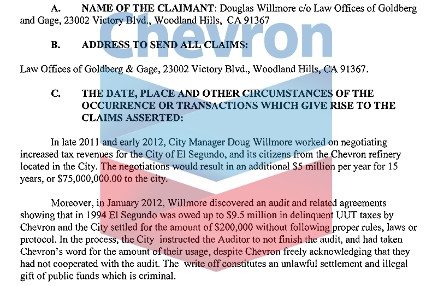


The skirmish of words in El Segundo over its city manager’s proposal to raise local taxes on that city’s largest business, Chevron Oil, has suddenly become a full-fledged legal war, with the official making explosive accusations against both El Segundo’s government and Chevron. The story, which Donald Cohen has been following for Frying Pan News, began with Doug Willmore’s efforts to bring the giant refinery’s taxes in line with the taxes paid by other California oil companies. Willmore was subsequently fired on February 9 by El Segundo’s city council.
In response, the ousted city manager has filed a governmental claim against El Segundo, a forerunner to a lawsuit. In it, Willmore claims that:
» Read more about: El Segundo Inc.: Furor Over Chevron’s Sweetheart Deal »
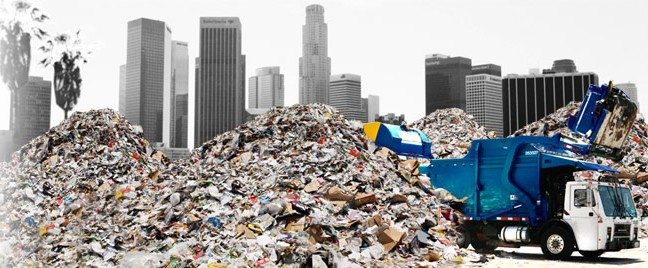

February 13 was a big day for those who want Los Angeles to lead the way in greening our cities. After a contentious all-day hearing, the L.A. City Board of Public Works unanimously approved the Bureau of Sanitation’s recommendation to transform trash collection from businesses and large apartment buildings.
Under the new system, which must still be approved by the City Council, haulers will operate under an exclusive franchise system with environmental standards and accountability. This means, finally, that our city will know who is picking up trash where, when and how — and that only responsible haulers, committed to playing by the rules, will be picking up and processing our trash.
One of the themes heard repeatedly during public testimony at last week’s board hearing was that an exclusive system is going to raise costs. And there was a magic number to go along with the cry: 33 percent!
» Read more about: Junk Math: The Waste Industry’s Numbers Don’t Add Up »
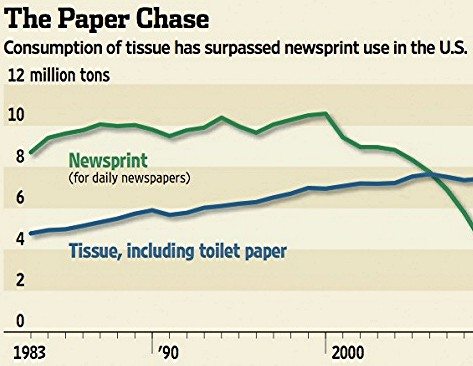
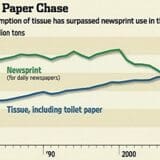
(Note: This post first appeared on Grist.com.)
By Christopher Mims
Maybe you’ve heard that we’re now using more trees for toilet paper than for newsprint. (Not least because the newspaper industry is even more in the toilet than toilet paper.) But did you know that because of Americans’ demand for super-soft TP for our bungholes, 98 percent of the pulp used to make the stuff comes from virgin wood?
“Future generations are going to look at the way we make toilet paper as one of the greatest excesses of our age. Making toilet paper from virgin wood is a lot worse than driving Hummers in terms of global warming pollution,” Allen Hershkowitz, a senior scientist at the Natural Resources Defence Council, told the Guardian.
More toilet paper used to be made out of recycled office paper,
» Read more about: Let’s Ban Toilet Paper, Some Enviros Say »
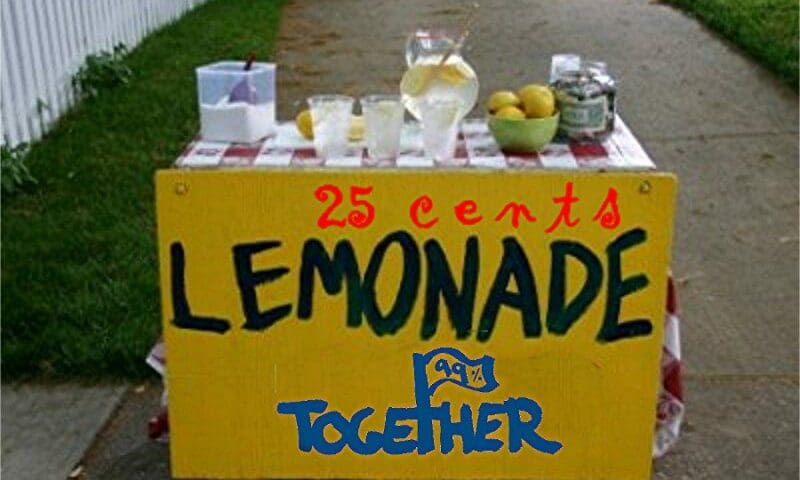

(Note: This post first appeared on Philanthropy New York’s Smart Assets blog.)
By Beth Herz
Leading the charge on an issue can bring an organization’s work into the spotlight—and sometimes also under a microscope. Madeline Janis, Executive Director of the Los Angeles Alliance for a New Economy (LAANE), learned this when her own organization’s work came under scrutiny for less-than-benevolent reasons. While under her leadership, LAANE learned that an unnamed political ops firm was conducting a careful investigation of all of its records, apparently intending to find fodder for a smear campaign.
On November 29th, Philanthropy New York hosted a funders briefing to discuss the rise of this type of political attack on advocacy work and the roles foundations can play in responding. The briefing’s two panels included Madeline Janis’s story and a case study from Cecile Richards, President of Planned Parenthood.
» Read more about: How to Fund Advocacy in Polarized Political Times »


El Segundo city manager Doug Willmore didn’t know who he was messing with.
In January, 2012 the L.A. Times reported that El Segundo, home to a huge Chevron refinery, was considering raising the oil giant’s taxes to help meet the demands of a growing town. Refineries around the state pay far higher taxes to their local governments than Chevron does – which is why Willmore figured the proposal made sense.
Chevron’s El Segundo tax bill is $5 million, far less than other cities receive from their refineries. Torrance got $9.8 million from Exxon Mobil and Carson got $10.2 million from BP. Chevron paid $15.4 million to Richmond for its Northern California facility.
Chevron, of course, wants to hold on to its growing profits and is fighting hard against any tax increase. When the proposal first came forward Chevron reacted with disbelief that the proposal would be made public before they knew about it.


It’s about 6 p.m. and I’m speed-walking to the Seventh and Figueroa Red Line stop to make sure I catch the train after work. At 6:10, the train promptly arrives at the platform and I’m home in 12 minutes. Fortunately, I never have to think twice about hopping on that train or worry about whether the train will shut down or collapse. I also have a convenient alternative to sitting in traffic, and while riding the train I feel secure knowing that our subway system was safely built by skilled hands thanks to government investment in our transit system.
But with the state of the economy and all the talk about the decline of our infrastructure in the United States, I wonder if I have taken what public transportation we have for granted. Then I say to myself, “I’ll cross that bridge when I get there.” (Pun may or may not be intended.)
Here in Los Angeles,
» Read more about: How Congressional Gridlock Is Wreaking Havoc on Our Streets »
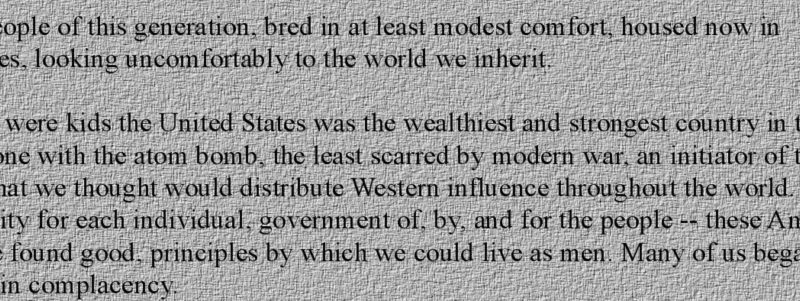
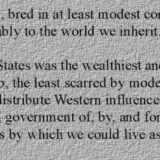
Recently I was invited to speak at a conference marking the 50th anniversary of the Port Huron Statement. Never heard of it?
In 1962, at a United Auto Workers conference center in Port Huron, Michigan, about 60 student activists collectively hammered out what they named an “Agenda for a Generation” with the strong belief that this document could help create the world they hoped for. “We regard men as infinitely precious and possessed of unfulfilled capacities for reason, freedom, and love,” it optimistically declared.
Most were in their 20s, several veterans of civil rights sit-ins or campaigns to end the nuclear arms race. Participatory Democracy was the overall framework – a political vision in which people have power over the decisions that affect their lives. In all-night sessions they argued about wording and emphasis and produced a document that addressed the major challenges of unrepresentative politics,


“James, would you mind driving me to Wal-Mart?”
Ugh.
My mother-in-law asked me this question on a day when my wife was at work and I was desperately trying to get some writing accomplished. I knew it was going to be a tough week to entertain, long before Gerry arrived — a clash of union meetings, picketing and writing classes at Bergamot Station in Santa Monica.
I was typing at the computer in our small, one-bedroom apartment when she posed the question to me. I tried not to overreact, but I’m sure my eyebrows constricted tighter than I had intended.
“Wal-Mart?” I replied. “You want me to drive you to . . . Wal-Mart?”
She nodded. “I’d like to go the garden center and pick up some things.”
I didn’t want to drive to Wal-Mart, but when it came down to it I decided I would rather be on the wrong side of my union than on the wrong side of my mother-in-law. » Read more about: My Mother-in-Law’s Wal-Mart Moment »


George Garrigues/Wikimedia
The emergence of Los Angeles as one of the world’s great cities, despite its location in a resource-stressed desert basin, has always been the surprise outcome of an unnatural act. L.A.’s stunning growth has been fed by a vast network of electric transmission wires that have, for 100 years, drawn in power from around the West to fuel the always-enlarging economic engines of the city.
This form of urban nourishment has been orchestrated by the city-owned Department of Water and Power (LADWP), which has historically provided L.A. with extremely reliable power at an unusually low price. But now, like utilities around the nation, the DWP is facing serious challenges.
First, the DWP will have to provide more and more power to the city. The population of Los Angeles is going to keep expanding, and with technological innovations like electric vehicles, the need for power will only increase.
» Read more about: DWP’s Power Struggle and the Future of LA »


The U.S. Supreme Court’s recent decision declining to hear an appeal of the L.A. Grocery Worker Retention Ordinance sparked protests from the California Grocers Association. The CGA claimed that the ordinance, which protects the jobs of grocery employees following an ownership change, will do more harm than good in communities suffering from lack of access to healthy food options. Dave Heylen, speaking to the L.A. Business Journal on behalf of the CGA, had this to say: “Our industry and community health groups have long been working to bring more stores into these underserved areas.”
Since when?
For decades, as grocery stores fled South and East Los Angeles, community groups demanded answers from the industry, only to hear the same refrain over and over again. “It’s too difficult to operate in poor neighborhoods.” “Costs are too high.” The Los Angeles Community Redevelopment Agency,
» Read more about: Grocers Association Fights Food Deserts! Really? »
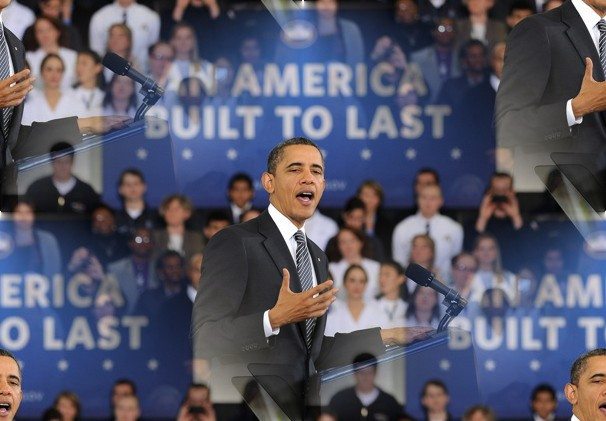

(Note: Brian Beutler’s post first appeared on Talking Points Memo. Frying Pan News presents it here as a snapshot of the Congressional fight over the future of America’s social safety net and does not intend it to be an endorsement of one political party or criticism of another.)
The GOP’s accession to reality on the payroll tax cut is being cast as a key victory for Democrats and President Obama. Republicans caved, the payroll tax will almost certainly be renewed, and the economy won’t take a tough hit just as the recovery’s beginning to accelerate.
But it also reveals a flaw — a potentially huge flaw — in the conservative movement’s generational strategy to roll back the federal safety net.
These might sound like two wildly disparate issues, but they’re actually variations on a years-long theme.
» Read more about: Payroll Tax Cut to Extend; Entitlement Fights Loom »
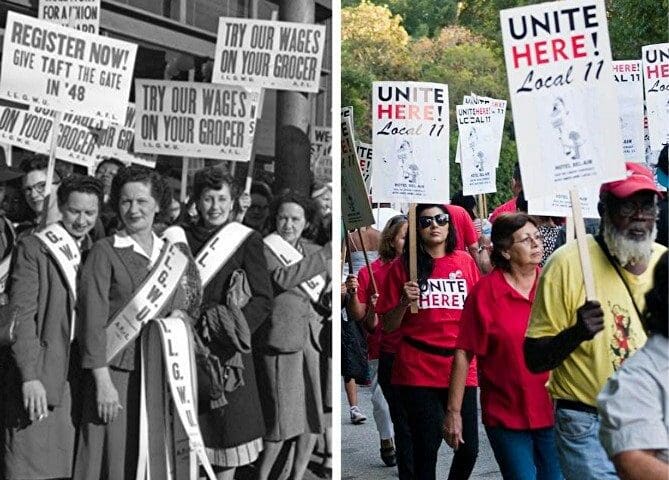
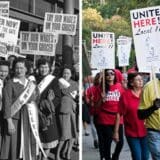
(Note: This January 27 post by David Madland and Nick Bunker appeared on the Center for American Progress’ Action Fund blog.)
The Bureau of Labor Statistics, or BLS, data released today on the union status of the American workforce in 2011 show no growth in union membership—a troubling sign as the nation debates how to strengthen the middle class. That’s because unions help strengthen the middle class by giving workers a voice in the economy and our democracy. Yet the fact that union membership didn’t significantly decline—even amid a weak economy and harsh political opposition—is a significant accomplishment and offers some hope for the future.
Overall, the BLS figures show that the union membership rate fell from 11.9 percent in 2010 to 11.8 percent in 2011, but the difference is so small that the rate effectively stayed the same.
» Read more about: Unions Are the Foundation of America's Middle Class »


We know it’s last-minute, but for those wishing to celebrate Valentine’s Day with a tip of the hat to labor, the folks at L.A. Labor 411 have a list of businesses you may be in need of February 14 that proudly fly the union label. The following are a representative sampling from some select categories.
Ghirardelli Chocolates
Hershey Chocolate
Hershey Kisses
Russell Stover Candy
See’s Candies
Godiva Chocolates
Albertsons
El Super
Gelson’s
Ralphs
Stater Bros.
Vons
United States Postal Service
UPS
Encounter Restaurant LAX
La Scala
Musso & Frank Grill
Beverly Hilton
Doubletree San Pedro
Fairmont Miramar
Renaissance Hollywood
Sheraton Universal
Westin Bonaventure
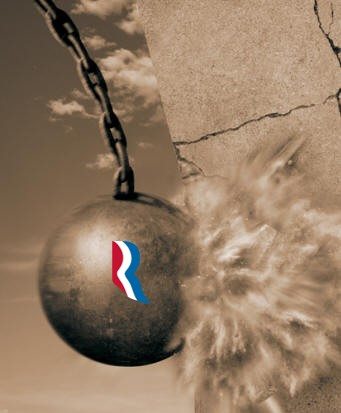

“Creative destruction” has been widely invoked again since Newt Gingrich began attacking Mitt Romney’s record at the private-equity firm, Bain Capital. Of course, the term is a perennial favorite with business writers. But in response to Gingrich’s attacks, Romney and his allies have insisted that Bain exemplifies “creative destruction,” the closely-linked glory and pain of unfettered capitalism.
“Creative destruction,” the concept, however, carries a more mixed message than many of Romney’s defenders may think. In fact, it points to deep problems that face conservatives whenever they argue that ordinary people should look past the ugly and brutal side of economic life. The phrase was first used by the Austrian economist, Joseph Schumpeter, in his 1942 book, Capitalism, Socialism and Democracy. It referred to a phenomenon Schumpeter had been writing about for decades, a process bound up with entrepreneurship and innovation.
Entrepreneurs, Schumpeter argued, were no ordinary businesspeople. Entrepreneurs were visionaries,
» Read more about: Romney's Resume: Who’s Creative? Whose Destruction? »


It seems inevitable that national coverage of the Occupy movement has been dying down. The sporadic stories I read are of arrests of occupiers in different cities, but I surmise that this too will eventually become old hat in the media and we will soon settle our attentions wholeheartedly on the presidential election, which in my opinion is a real shame.
I’ve grown weary of our gerrymandered elections. For a country that holds freedom of choice so dear to American life, I find it odd and disheartening that we are really only given two parties to choose from. The consumer in me gets depressed every election cycle. It’s akin to going to Ben and Jerry’s and being told that you can only have chocolate or vanilla.
My sincere hope is that this year the narrative is different. I am pinning my hopes on the Occupy movement to resurrect itself to the national news media and overshadow our fixed-choice election for the presidency.


(This post originally appeared February 8 on the author’s Switchboard blog.)
Yesterday, the Bureau of Sanitation for the City of L.A. released its recommendations for fixing the inefficiencies in L.A.’s waste system. After more than a year of careful consideration, the Bureau determined that an exclusive franchise system with 11 franchise zones for the commercial and multi-family sectors would provide the best solution to increasing recycling and minimizing the burden that waste collection imposes on L.A. residents.
As I have written before, the commercial and multi-family sectors are responsible for approximately 70 percent of the waste L.A. sends to landfills, so it is an important nut to crack to meet the City’s zero waste goals. I have written several blogs on this issue and on the benefits of going to zero waste ranging from reducing our dependence on polluting and space hogging landfills to reducing our greenhouse gas emissions to creating more jobs.
» Read more about: Big Step Taken to Resolve LA's Trash Crisis »


(This post first appeared as a Los Angeles Times opinion piece.)
Last week, one of the country’s oldest and largest public economic development programs came to an inglorious end when the governor and Legislature pulled the plug on California’s 400 redevelopment agencies.
So why did the governor and lawmakers end the state’s only real community revitalization program, especially at a time when there is such great need for jobs and affordable housing?
The biggest reason was the desire of local governments and the state to use the programs’ resources — about $6 billion a year statewide — to fill budget holes. But part of the fault also lies with the agencies, which never fully articulated a mission or resolved tensions between public purpose and private profit.
The purpose of redevelopment, laid out in the original law authorizing it, was to “eliminate physical blight,”
» Read more about: California Needs a Redevelopment Reboot »
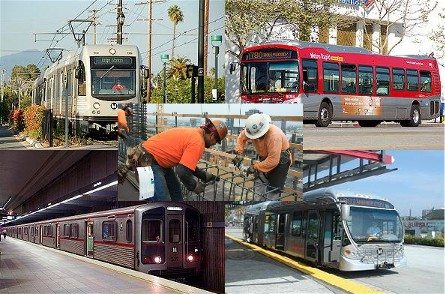

By Maria Elena Durazo and Denny Zane
(This feature first appeared on the Huffington Post.)
While Washington, D.C. has been stuck in what amounts to a partisan traffic jam on the 405 at rush hour, unresponsive and unwilling to rebuild our national economy and infrastructure, we took matters into our own hands in Los Angeles.
In November of 2008 business, labor and environmental organizations of Los Angeles County worked together to sponsor Measure R, a half-cent sales tax increase to fund transportation projects throughout the county. When voters overwhelmingly approved Measure R, they may have been looking primarily for solutions to traffic congestion and air pollution, but they succeeded in approving nearly $40 billion over 30 years to create hundreds of thousands of jobs as well as an economic stimulus for Los Angeles.
In addition, Mayor Villaraigosa is working hard to convince the federal government to create a program of low-interest financing for Measure R’s transit program to accelerate the implementation of those projects over 10 years,
» Read more about: “R” Is for Recovery: 23,400 Jobs Coming to LA Metro »


It’s not known if the Tea Party will ever be identified by one color, the way our two dominant political parties are. With red and blue already taken, it’s tempting to guess that the Tea Party would embrace – well, white. In any case, it won’t be green. Consider a February 4 New York Times piece, which spells out the tireless campaign waged by the movement against any legislation tilting toward a sustainable environment. Some of the laws vehemently contested include:
The reason for Tea Party opposition to these seemingly uncontroversial undertakings is a deep suspicion of an obscure and nonbinding United Nations resolution passed in 1992.
» Read more about: Tea’d Off! Why the Baggers’ Grassroots Aren’t Green »